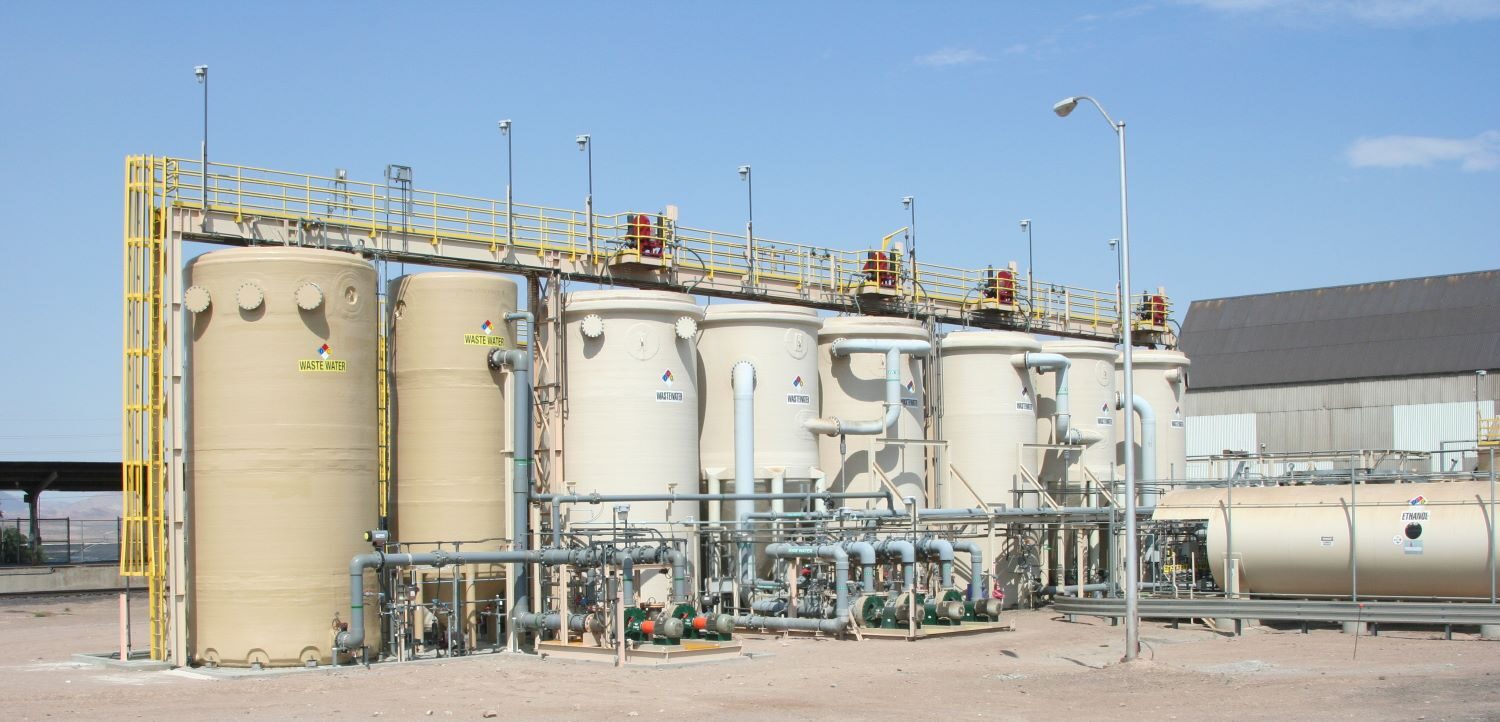Challenge
The GenCorp Aerojet facility in Sacramento, California, is the site of the world’s first groundwater treatment system for perchlorate. Ammonium perchlorate is an additive (oxidizer) in solid rocket propellant, and is used in the manufacture of fireworks, matches and pharmaceuticals. Perchlorate is highly water soluble and persistent in the subsurface. The compound was discovered in California during tests of groundwater conducted in 1997. In response, Aerojet helped form a national Perchlorate Study Group, composed of manufacturers and users, to work with the Department of Defense and the EPA in the development of regulatory standards for perchlorate as well as remedial technologies.
Solution
Aerojet evaluated several treatment strategies for perchlorate in groundwater, including ion exchange resins and biological reduction. The current system design was selected following the performance of field pilot studies using a biological fluidized bed reactor (FBR). The pilot system treated a groundwater flow of 30 gpm, and data generated from the study were used for the design basis of the full-scale system.
The $5 million facility is designed to treat up to 4,000 gallons per minute (gpm) of groundwater using four Envirogen fluidized bed bioreactor systems. The concentration of perchlorate treated is 8 mg/L (ppm), and the designed treatment goal was an effluent with less than 18 µg/L (ppb). The system has been processing 5,000 gpm, exceeding its design throughput, consistently produced effluent with less than 4 ppb perchlorate, the detection limit, since its startup 2 decades ago.
Envirogen’s biological fluidized bed reactor technology comprises columnar reactor that optimizes the biological treatment of groundwater by using a bed of media, either activated carbon or sand, which serves as a support material for biological growth. Water flows upward through the reactor at a sufficient velocity to expand and fluidize the bed. The design allows a large inventory of biomass to be maintained in the reactor while maximizing the contact between the microorganisms and contaminants to be treated. In the case of perchlorate treatment, a carbon substrate and nutrients are added to the influent of the reactor. The reactors supplied by Envirogen are 14 feet in diameter and approximately 21 feet tall. Additional components of the treatment train include continuous sand filters to remove solids, primarily waste biomass, and solids handling equipment.
How does a fluidized bed reactor work? An overview of Envirogen’s patented FBR treatment process/fluidized bed reactor design. (US Patents: 6706521, 5750028, 5788842, 7754159, 7611890, 7572626, 8323496, 6830922).

